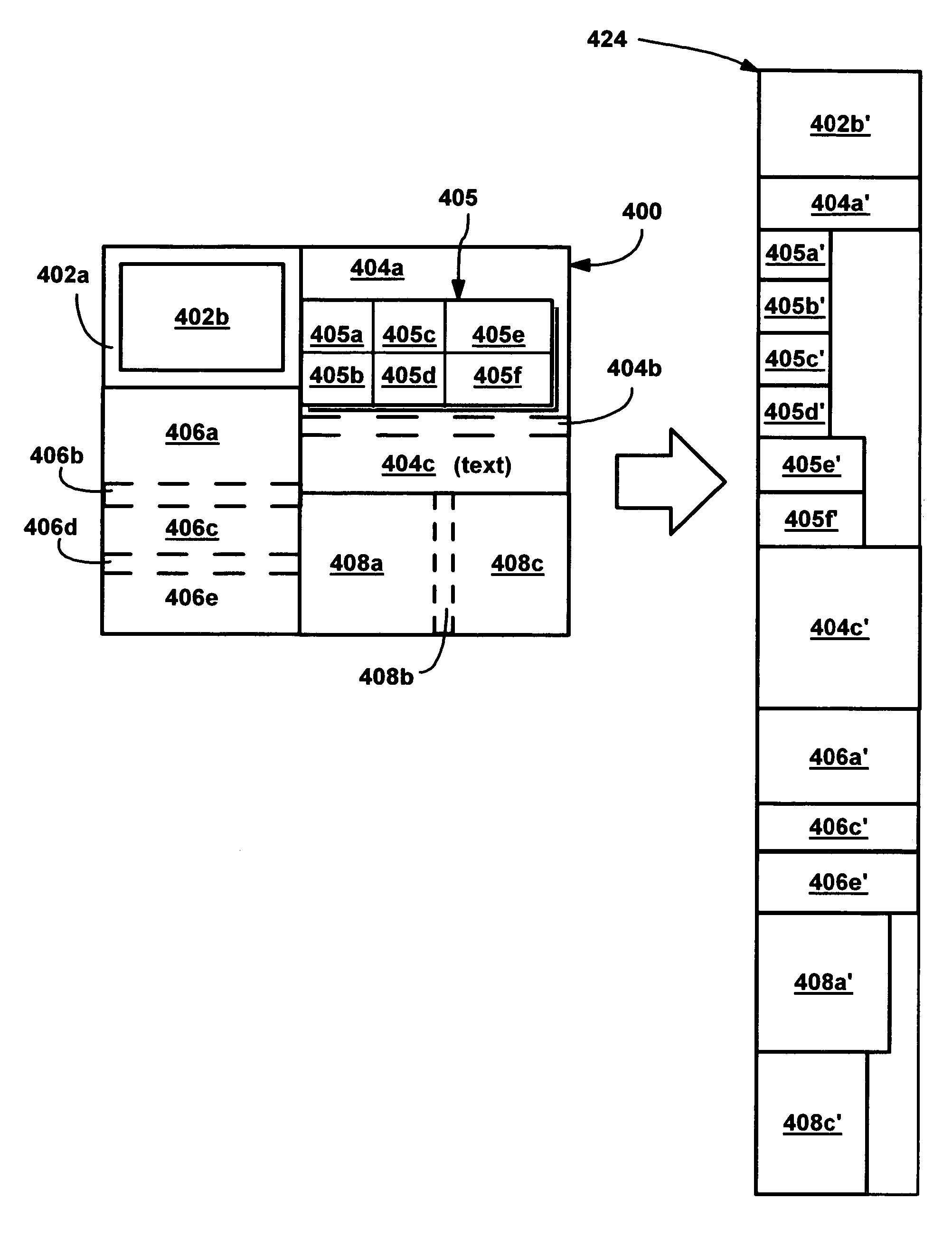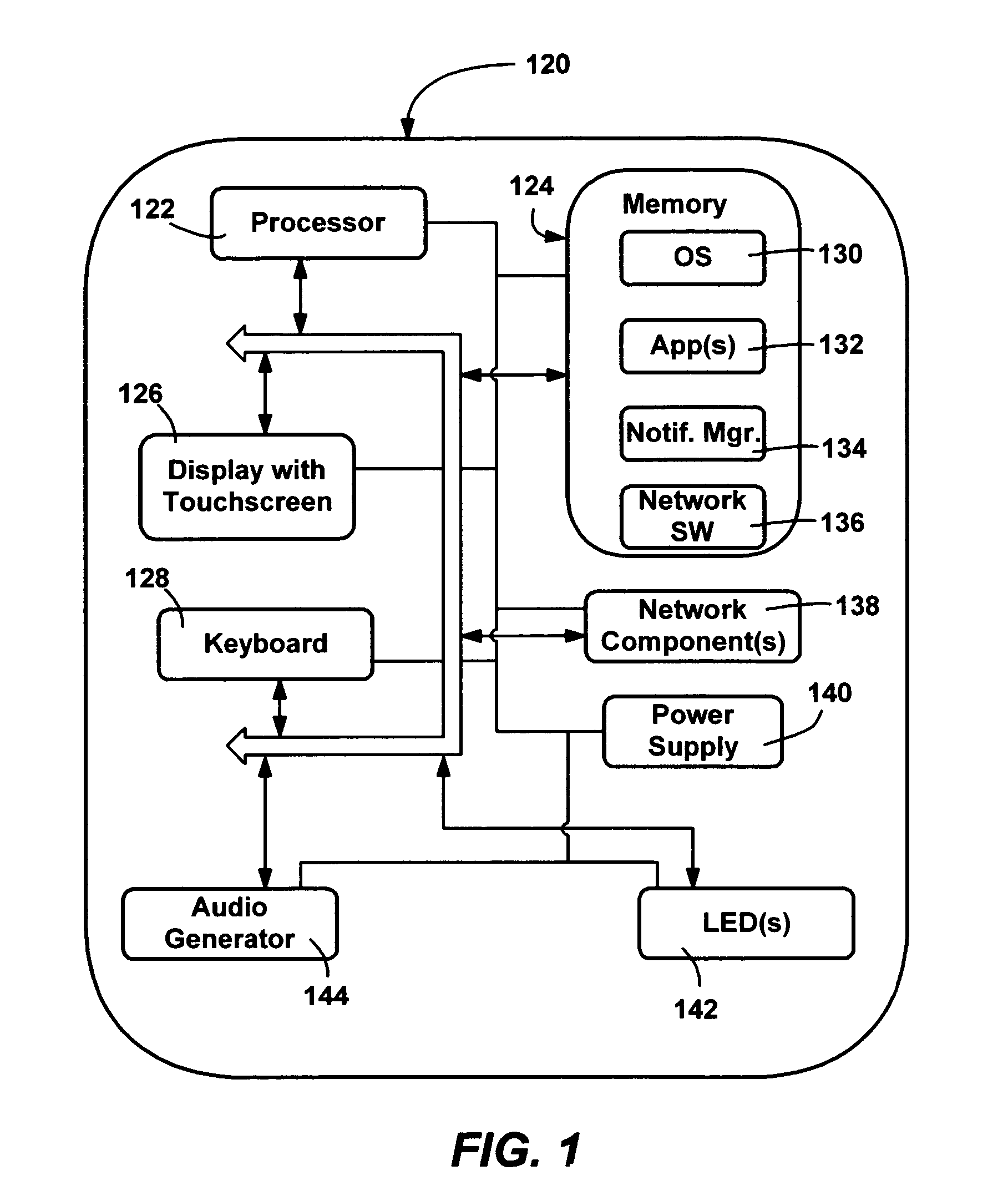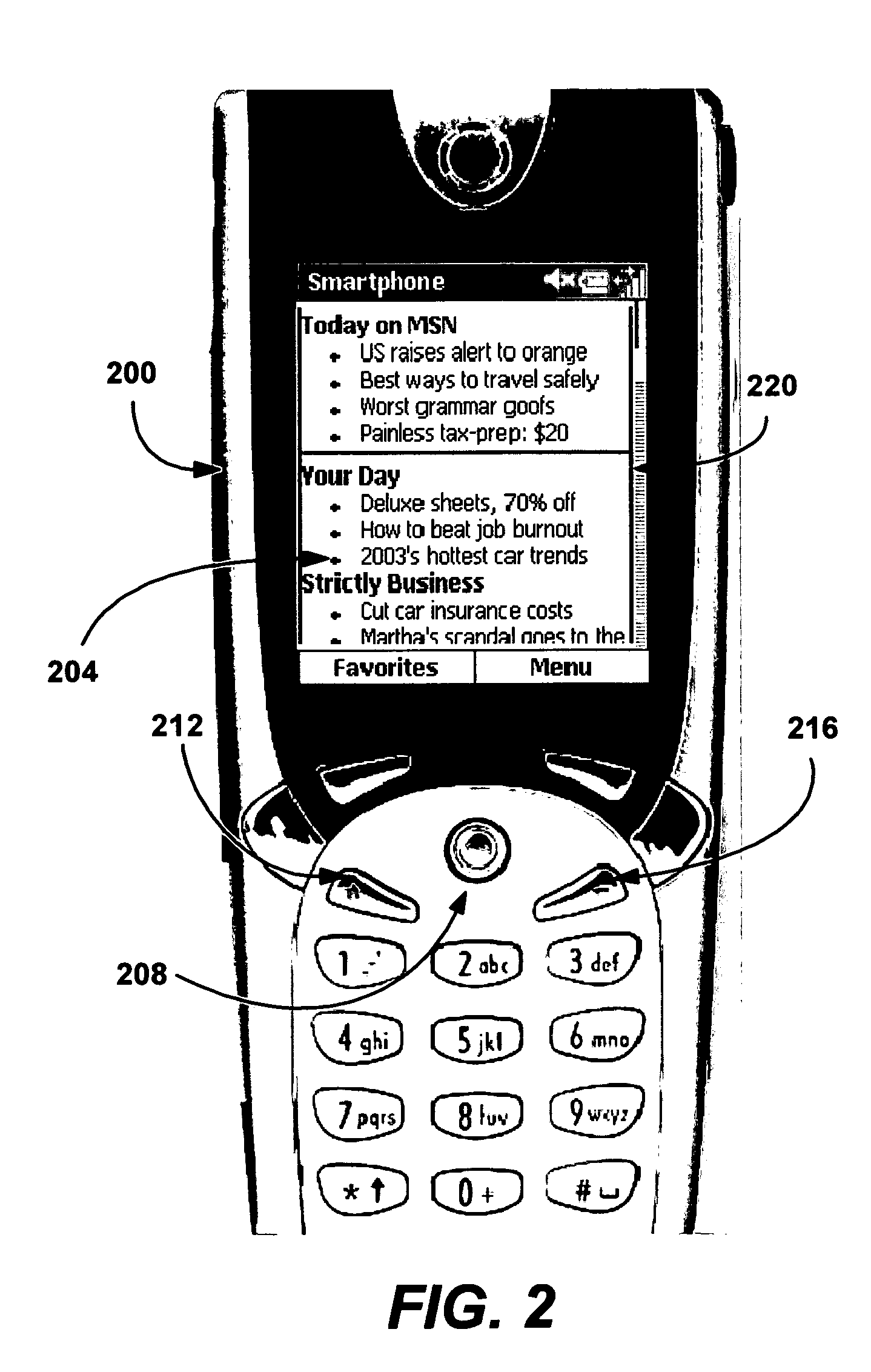Single column layout for content pages
a content page and single column technology, applied in the field of single column layout for content pages, can solve the problems of web browsing on mobile devices, page content is too small to be easily viewed, and many would not provide different page layouts based on each type of devi
- Summary
- Abstract
- Description
- Claims
- Application Information
AI Technical Summary
Benefits of technology
Problems solved by technology
Method used
Image
Examples
Embodiment Construction
Exemplary Operating Environment
[0021]FIG. 1 shows functional components of one such handheld computing device 120, including a processor 122, a memory 124, a display 126, and a keyboard 128 (which may be a physical or virtual keyboard, or may represent both). The memory 124 generally includes both volatile memory (e.g., RAM) and non-volatile memory (e.g., ROM, PCMCIA cards, and so forth). An operating system 130 is resident in the memory 124 and executes on the processor 122, such as the Windows® operating system from Microsoft Corporation, or another operating system.
[0022]One or more application programs 132 are loaded into memory 124 and run on the operating system 130. Examples of applications include email programs, scheduling programs, PIM (personal information management) programs, word processing programs, spreadsheet programs, Internet browser programs, and so forth. The handheld personal computer 120 may also include a notification manager 134 loaded in the memory 124, whi...
PUM
 Login to View More
Login to View More Abstract
Description
Claims
Application Information
 Login to View More
Login to View More - R&D
- Intellectual Property
- Life Sciences
- Materials
- Tech Scout
- Unparalleled Data Quality
- Higher Quality Content
- 60% Fewer Hallucinations
Browse by: Latest US Patents, China's latest patents, Technical Efficacy Thesaurus, Application Domain, Technology Topic, Popular Technical Reports.
© 2025 PatSnap. All rights reserved.Legal|Privacy policy|Modern Slavery Act Transparency Statement|Sitemap|About US| Contact US: help@patsnap.com



